Introduction and the Importance of E-commerce Website Design in the Digital Age
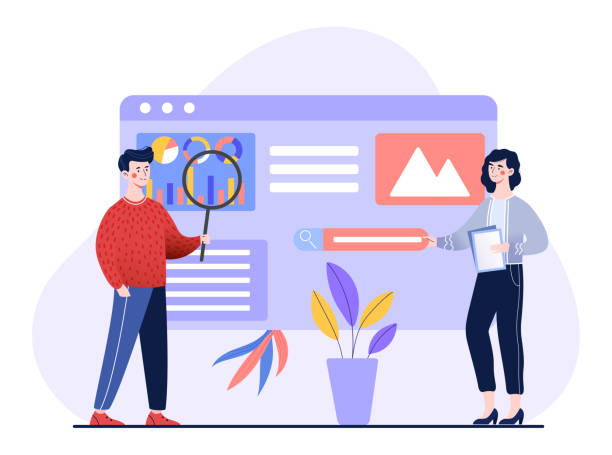
In today’s world, where communication and transactions are increasingly moving towards the digital space, having an #online_store is no longer a luxury option, but a necessity for every business.
E-commerce website design enables businesses to overcome geographical limitations and offer their products and services to a wider range of customers worldwide.
This transformation not only provides new opportunities for growth and development but also has raised competition to an unprecedented level.
Therefore, simply having an e-commerce website is not enough; rather, this website must be professional, user-friendly, and compliant with current web design standards.
The importance of e-commerce website design goes beyond an online storefront; this website acts as a powerful tool for marketing, inventory management, customer service, and even collecting valuable data.
Can a business truly remain sustainable in the long term without a #digital_presence? This is a thought-provoking question, and the answer is negative in most cases.
In the era of #e-commerce, customers expect easy access to products at any time.
An optimized e-commerce website provides an enjoyable shopping experience for the customer, leading to increased loyalty and repeat purchases.
From a technical perspective, e-commerce website design requires technical knowledge in various fields, including programming, graphic design, search engine optimization (SEO), and cybersecurity.
Ignoring any of these factors can lead to project failure.
Do you dream of a thriving online store but don’t know where to start?
Rasaweb is your comprehensive e-commerce website design solution.
✅ Attractive and user-friendly design
✅ Increased sales and revenue⚡ Get free consultation
Initial Planning Stages for Creating an Online Store
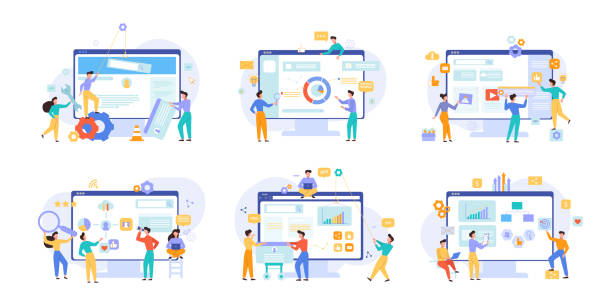
Before any practical action for e-commerce website design, there is a crucial step that is often overlooked: comprehensive and precise planning.
This stage is the cornerstone of your online store’s future success and sets the roadmap for the entire process.
First, determining the main goal of launching the online store is essential.
Do you simply intend to sell products, or do you want to build a strong brand? Who is your target audience? A precise understanding of your audience (age, gender, interests, buying habits) helps you tailor your design, content, and even marketing strategy to their needs.
The next step is market research and competitor analysis.
Examining your competitors’ strengths and weaknesses can provide valuable ideas for differentiating and improving your store.
What products do they sell? How do they price them? What is their website’s user experience like? Also, special attention should be paid to choosing a suitable and attractive domain name that is relevant to your business.
This name should be short, memorable, and preferably include keywords related to your field of activity.
Planning for the website structure, product categorization, static pages (contact us, about us, terms and conditions), and payment gateways also takes place at this stage.
This instructional and guiding stage helps you enter the implementation phase of e-commerce website design with a clearer vision and fuller preparation, preventing waste of time and resources.
A well-defined and transparent plan significantly increases the success potential of your online sales website.
Choosing the Right Platform for Your E-commerce Website Design

Choosing the right platform is one of the most crucial decisions in the process of e-commerce website design.
This choice will affect all technical, managerial, cost, and future development capabilities of your website.
There are two main approaches to building an online store: using ready-made E-commerce Content Management Systems (CMS) (such as WooCommerce, Shopify, PrestaShop) or custom design.
Each of these options has its own advantages and disadvantages that should be reviewed based on your team’s needs, budget, and technical knowledge.
Ready-made platforms typically come with lower initial costs and faster setup, but may have limitations in terms of flexibility and customization.
In contrast, custom design offers unlimited freedom of action but is usually more time-consuming and costly.
| Feature | Ready-made Platform (e.g., WooCommerce/Shopify) | Custom Design |
|---|---|---|
| Initial Cost | Medium to Low | High |
| Setup Speed | Fast | Long |
| Flexibility and Customization | Medium (with limitations) | Very High |
| Technical Knowledge Required | Low to Medium | High |
| User Community Support | Excellent | Depends on the development team |
Making this decision is a specialized discussion that requires consultation with e-commerce website design experts.
For small and medium-sized businesses with limited budgets, platforms like WooCommerce, which run on WordPress, are excellent options.
These platforms have numerous themes and plugins that add e-commerce functionalities to the website.
In contrast, for larger companies with specific and more complex needs, custom design can be a better solution.
This choice should be made with a long-term view of business development and growth.
Principles of User Interface (UI) and User Experience (UX) Design in Online Stores

After choosing the platform, it’s time for one of the most important aspects of e-commerce website design: User Interface (UI) and User Experience (UX) design.
These two concepts, though related, have key differences.
UI refers to the visual appearance and elements of the site (colors, fonts, buttons, icons), while UX focuses on the user’s feelings and experience when interacting with the site (ease of navigation, loading speed, layout logic).
An e-commerce website with beautiful UI but poor UX will lead to user frustration and site abandonment.
On the other hand, an excellent UX can turn users into loyal customers, even if the UI is not strikingly dazzling.
Mobile-friendliness or responsiveness of a website is an indispensable necessity today.
A significant portion of users connect to the internet via mobile phones; therefore, your site must display correctly on all devices, from mobile phones and tablets to laptops and desktops, and provide a consistent user experience.
Page loading speed is also a critical factor; today’s customers have little patience, and even a few seconds of delay can mean losing a sale.
This issue is of high importance from the technical and specialized aspect of e-commerce website design.
Easy navigation, powerful search functionality, a simple and transparent payment process, and clear display of product information (price, availability, shipping options) are among the key UX principles that must be considered.
An enjoyable user experience encourages users to stay on the site and make purchases.
Disappointed by your e-commerce site’s low conversion rate? Rasaweb turns your e-commerce site into a powerful tool for attracting and converting customers!
✅ Significant increase in visitor-to-buyer conversion rate
✅ Unparalleled user experience to boost customer satisfaction and loyalty⚡ Get free consultation from Rasaweb!
The Role of Quality Content and Images in Customer Attraction
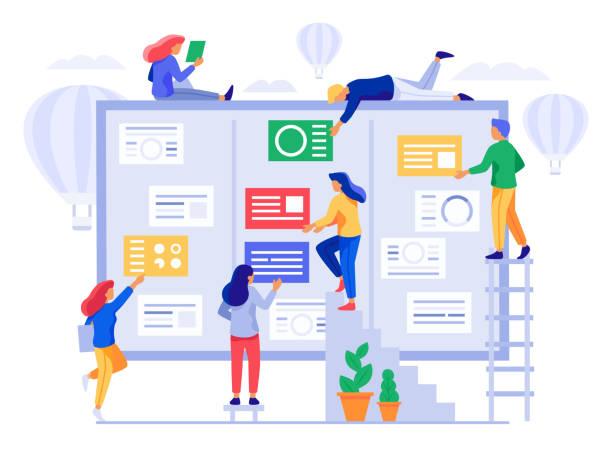
Content is king; this statement holds true more than ever in the world of e-commerce website design and digital marketing.
The quality of textual and visual content in your online store directly impacts customer attraction, trust-building, and ultimately, their purchase decision.
Product descriptions must be comprehensive, accurate, engaging, and convincing.
Merely listing features is not enough; the benefits and value the product creates for the customer should be highlighted.
Using appropriate keywords in product descriptions helps with SEO and your site’s visibility in search engines.
However, visual content, especially images and videos, might even be more important than text.
Customers cannot touch or see the product up close, so high-quality images, from different angles and with sufficient detail, play a crucial role in building trust and encouraging purchases.
Product videos that demonstrate how to use or the benefits of the product can greatly enhance the shopping experience.
This is a guiding content for improving the visual and content aspects of e-commerce website design.
In addition to product images, using attractive images in banners, sliders, and main pages of the site also contributes to visual appeal and a professional appearance.
A product image gallery that allows zooming and viewing details is a fundamental need for any online store.
Also, customer reviews and the Frequently Asked Questions (FAQ) section are considered types of content that add to the site’s credibility and help other users make decisions.
Methods for Enhancing Security and Trustworthiness in E-commerce Websites
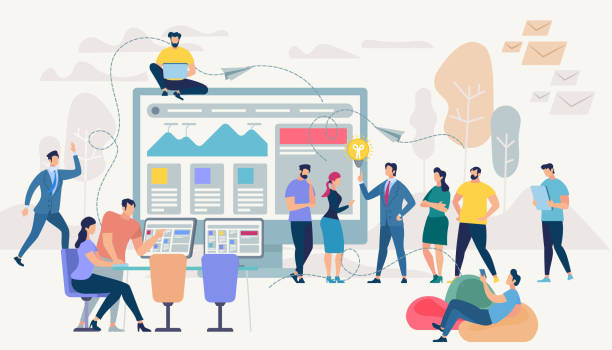
Security and trustworthiness are two core pillars of any successful e-commerce website.
In a world where cyberattacks and online fraud are increasing, customers expect their personal and financial information to be protected in a secure environment.
Installing an SSL certificate (Secure Sockets Layer) is the first and most essential step to enhancing website security.
This certificate encrypts the communication between the user’s browser and the website server and conveys a sense of trust to the user by displaying a green lock icon in the browser’s address bar.
Using reputable and well-known payment gateways is also of high importance.
Collaborating with reputable banks or online payment service providers that adhere to high security standards provides assurance to customers.
This is a specialized point in the field of e-commerce website design that should not be overlooked.
Keeping the platform, theme, and plugins updated is another important security measure; many cyberattacks occur through vulnerabilities in outdated software.
Furthermore, implementing a transparent and accessible Privacy Policy that clearly explains how user information is collected, used, and protected helps increase trustworthiness.
News and reports related to data breaches can quickly destroy a business’s credibility, so preventive measures must be taken seriously.
Regular website data backups, using a Web Application Firewall (WAF), and continuous monitoring of suspicious activities are also essential security protocols for any online sales website.
SEO and Digital Marketing for Online Store Visibility

Having a beautiful and functional e-commerce website is only half the journey; the other half is getting this site seen by the target audience.
This is where SEO (Search Engine Optimization) and digital marketing come into play.
SEO is the process of optimizing your website to rank higher in search engine results like Google.
This includes choosing appropriate keywords, optimizing content, URL structure, site speed, and internal and external linking.
A strong SEO strategy drives organic (free) and high-quality traffic to your store.
| SEO Factor | Explanation |
|---|---|
| Keywords | Research and use of phrases that users search for to find your products. |
| Quality Content | Comprehensive product descriptions, relevant blog articles, and helpful guides. |
| Site Speed | Image optimization, caching, and using powerful hosting for fast loading. |
| Responsiveness | Ensuring the site displays correctly on all devices, especially mobile. |
| Backlinks (External Links) | Obtaining links from other reputable websites that add to your site’s authority. |
In addition to SEO, digital marketing includes a wide range of activities: content marketing (blogging, video production), social media marketing (Instagram, Telegram), email marketing (newsletters, discounts), paid advertising (Google Ads, social media ads), and influencer collaborations.
This analytical and specialized approach helps you devise a comprehensive strategy for your store’s visibility.
To succeed in e-commerce website design and customer attraction, visual appeal alone is not enough; continuous effort is required to increase visibility and reach the audience.
These efforts include data analysis, testing different campaigns, and continuous optimization.
Customer Support and After-Sales Services in E-commerce Websites

The sales process doesn’t end with a transaction; rather, it’s just the beginning of building customer loyalty.
Customer support and after-sales services are fundamental pillars of any successful e-commerce website.
An excellent experience in this area can turn customers into permanent buyers and even advocates for your brand.
Clear and multiple communication channels (phone, email, online chat) must be available.
Response speed and quality of guidance are of high importance.
Customers expect to receive quick and effective responses in case of problems or questions.
Providing transparent information regarding return policies, warranties, shipping methods, and order tracking helps increase customer trust.
The Frequently Asked Questions (FAQ) section can also address many common ambiguities before they are raised.
This is a guiding content for improving the communication and after-sales aspects of e-commerce website design.
Order tracking systems that allow customers to view the real-time status of their purchases are also very useful.
Furthermore, collecting customer feedback through surveys or product review sections provides valuable information for improving your products and services.
This approach not only helps resolve current issues but also enables you to anticipate future customer needs and provide services that meet their expectations.
Strong after-sales service can be your main differentiator from competitors and act as a powerful word-of-mouth marketing tool.
Are you worried about losing customers because you don’t have a professional e-commerce website?
With e-commerce website design by Rasaweb, forget these worries!
✅ Significant increase in sales and visitor-to-customer conversion rate
✅ Professional and user-friendly design that earns customer trust
⚡ Get free consultation from Rasaweb
Challenges and Opportunities in Managing an Online Store
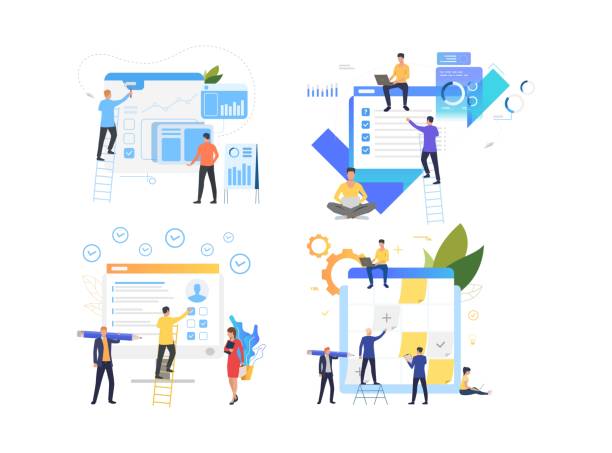
Managing an online store, like any other business, comes with its own specific challenges and opportunities.
One of the biggest challenges is intense competition.
Given the relative ease of setting up an online store, the market quickly becomes saturated, making it difficult to differentiate from competitors.
Another challenge is inventory and logistics management; ensuring sufficient stock, fast order processing, and timely product delivery requires an efficient management system.
Issues related to cybersecurity and protecting customer data are also always a serious concern.
On the other hand, there are countless opportunities in this field.
Access to a global market is one of the biggest advantages of e-commerce website design.
You can offer your products to customers across the country or even the world, without needing a physical presence in those areas.
This is an analytical and thought-provoking content that encourages you to reflect on various aspects of online sales websites.
The ability to collect precise data on customer behavior (such as preferred products, purchase history, visited pages) is an excellent opportunity for personalizing the shopping experience and offering targeted suggestions.
This data can significantly help improve marketing and sales strategies.
Also, the cost of setting up and maintaining an online store is usually significantly less than a physical store, which itself is a major economic advantage.
Agility and the ability to adapt quickly to market changes and customer needs are other key opportunities in managing an online store.
Is your business ready to leverage these opportunities and face the challenges?
The Future of E-commerce Website Design and Emerging Trends

The world of e-commerce website design and electronic commerce is constantly evolving and innovating.
Emerging trends continuously change the way online buying and selling happen and create new opportunities for businesses.
One of the most important of these trends is the use of Artificial Intelligence (AI) and Machine Learning (ML).
AI can highly personalize the shopping experience, from more accurate product recommendations to smart chatbots for customer support.
These technologies help e-commerce website owners increase their sales by better understanding user behavior.
Augmented Reality (AR) and Virtual Reality (VR) are also changing how customers interact with products.
Imagine being able to virtually try on clothes or place a sofa in your home before buying it! These engaging and immersive experiences significantly boost customer confidence when shopping online.
Voice stores and Voice Commerce are also growing with the proliferation of voice assistants like Siri and Google Assistant.
People can simply search for and buy products with their voice.
This is news and entertaining content about the future of e-commerce website design.
Sustainability and ethics have also become important trends; customers are increasingly looking for brands that take their social and environmental responsibilities seriously.
Therefore, emphasizing transparency in the supply chain and using sustainable materials can create a competitive advantage.
The future of e-commerce website design depends on embracing these new technologies and trends to provide an unparalleled user experience and meet increasing customer expectations.
Frequently Asked Questions
| Question | Answer |
|---|---|
| What is an e-commerce website? | A website that enables buying and selling of goods or services online. |
| What are the main features of a good e-commerce website? | Easy user interface, product categorization, shopping cart, secure payment gateway, search and filter options. |
| What are the common platforms for e-commerce website design? | WordPress (WooCommerce), Shopify, Magento, PrestaShop, etc. |
| Why is website responsiveness important for an e-commerce site? | For correct display of the site on all types of devices (mobile, tablet, desktop) and to improve user experience and SEO. |
| What are the benefits of having an e-commerce website? | 24/7 customer access, reduced operating costs, access to a wider market, collection of customer data. |
And other services of Rasaweb Advertising Agency in the field of advertising
Smart Advertising Campaign: Revolutionize click-through rates by customizing user experience.
Smart Digital Branding: A combination of creativity and technology to increase sales through SEO-driven content strategy.
Smart Website Development: A fast and efficient solution for increasing website traffic with a focus on intelligent data analysis.
Smart Google Ads: An effective tool for attracting customers through Google advertising management.
Smart Data Analysis: A combination of creativity and technology for customer acquisition through custom programming.
And over hundreds of other services in the field of internet advertising, advertising consultation, and organizational solutions
Internet Advertising | Advertising Strategy | Advertorial
Sources
Most Important Tips for Successful E-commerce Website Design
Best Platforms for Building an Online Store
SEO Guide for E-commerce Websites
Digital Marketing Strategies for Online Stores
? Rasaweb Afarin: Your digital partner for growth and visibility in the online world. From custom website design to SEO optimization, we offer comprehensive solutions for your business’s success.
📍 Tehran, Mirdamad Street, next to Central Bank, Southern Kazeroun Alley, Ramin Alley, No. 6



